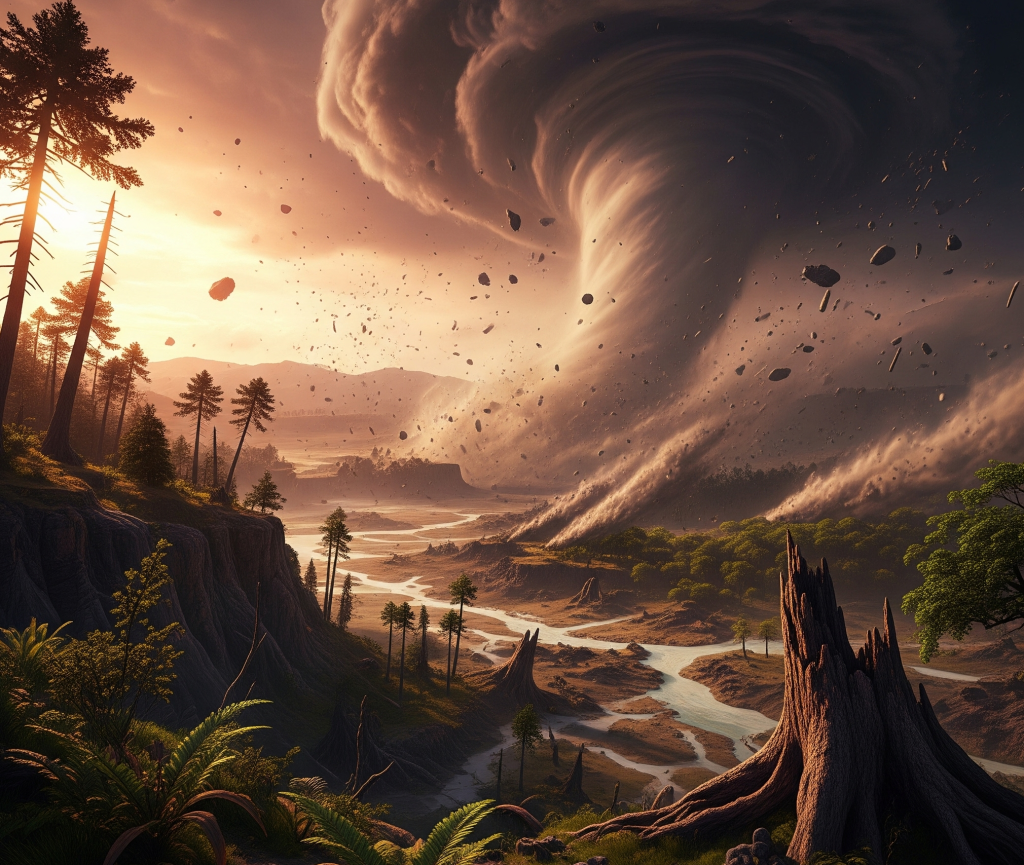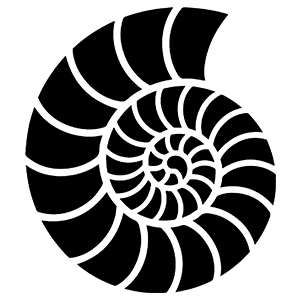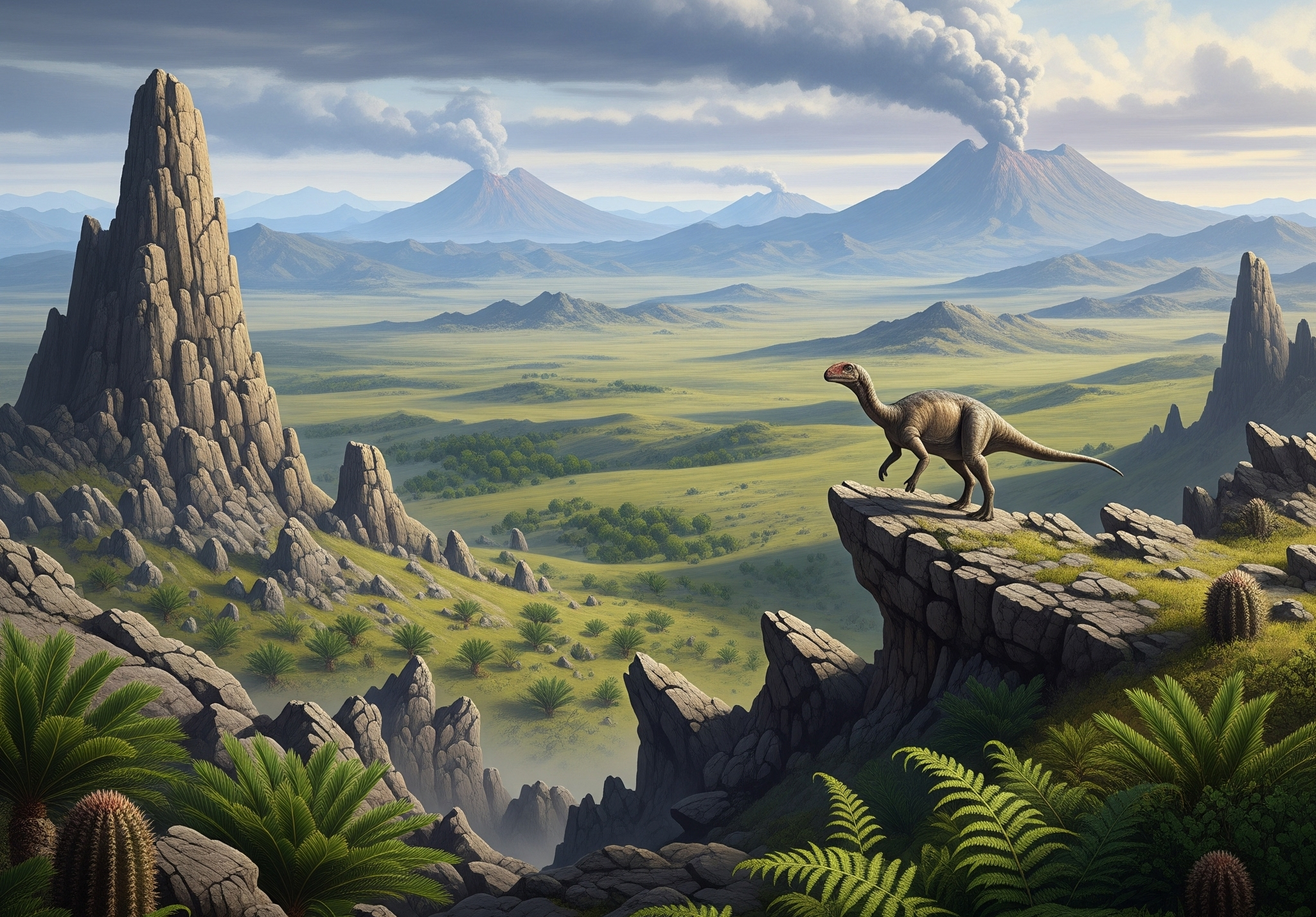When you think of dinosaurs, you probably picture huge, roaring creatures in a super green jungle, right? At the dawn of the dinosaurs world was not like that at all! Their home was a tough, wild place, very different from Earth today. It was a world that had just gone through a giant disaster, and only the strongest survivors made it.
Our story starts about 252 million years ago, not with a happy beginning, but with a huge, sad ending. Something called the “Great Dying” happened. It was the biggest extinction event ever!
Imagine almost all the animals on Earth disappearing. That’s what happened. More than 90 out of every 100 ocean animals died, and 70 out of every 100 land animals vanished. Scientists think it was caused by giant volcanoes erupting for a super long time in a place called Siberia. These volcanoes filled the air with bad gases, making the Earth super hot and the oceans super sour. It was a truly terrible time for life.
The world that was left after this disaster was hot, empty, and trying to heal. It took a long, long time – almost 20 million years! – for things to start getting better. And it was in this quiet, recovering world that the very first dinosaurs finally showed up.
Don’t Miss This!
After reading, challenge yourself with our interactive quiz at the end. Click here to take the Quiz
Index

Earth’s Giant Puzzle Piece
Back in the time of the first dinosaurs (which scientists call the Triassic Period, from about 252 to 201 million years ago), all the land on Earth was squished together into one giant continent. We call this supercontinent Pangaea. Imagine all the continents you know, like America, Africa, Asia, all stuck together like a giant puzzle! This huge landmass stretched from the very top of the Earth to the very bottom, surrounded by one giant ocean.
Because Pangaea was so big, the weather was really extreme, especially in the middle. Here’s what it was like:
- Super Hot Deserts: The middle of Pangaea was like a desert bigger than any desert we have today.
- Wild Weather Swings: Summers were burning hot, and winters could be freezing cold. The temperature could change a lot between day and night too.
- Very Dry: Most of Pangaea’s middle didn’t get much rain at all. It was a very thirsty place.
But near the giant ocean, things were a little different. The edges of Pangaea had crazy weather called mega-monsoons. This meant:
- Giant Rainstorms: For part of the year, huge storms would dump tons of rain, making rivers overflow and creating temporary lakes.
- Long Dry Spells: Then, for the rest of the year, the rain would stop, and the land would get super dry and baked by the sun.
So, any animal living back then had to be tough enough to handle both floods and droughts!
Another cool fact: Because the Earth was so warm, there were no ice caps at the North or South Poles, like we have today. This also meant the sea levels were higher than they are now.
A World Without Flowers or Green Grass
If you could travel back to the Triassic Period, you’d notice something strange about the plants: there were no colorful flowers! And no soft, green grass either. The world looked very different from our parks and gardens.
Instead, the land was covered with plants that might look a little familiar, but also very ancient:
- Tough Trees: Most trees were like pine trees (called conifers). They were strong and could handle dry weather.
- Palm-like Plants: You’d see lots of cycads, which look a bit like short, fat palm trees with tough, leathery leaves.
- Ginkgoes: These trees are still around today! They have fan-shaped leaves.
- Ferns and Horsetails: In the wetter areas, near rivers, there were thick patches of ferns and tall, skinny horsetails.
The plants were built to survive. They were often woody and had waxy leaves to keep water inside during the long dry times. So, the Triassic world was mostly shades of green, brown, and the reddish color of the soil. It was a world for tough plants, not pretty flowers!
Small but Mighty – The First Dinosaurs
It was in this wild world, about 230 million years ago, that the very first real dinosaurs appeared. And guess what? They weren’t giant monsters yet! They were actually quite small and quick. Some of the earliest ones were:
- Eoraptor: This dinosaur was only about the size of a greyhound dog! Its name means “dawn plunderer.” It was light and fast, with a long tail for balance. It probably hunted insects and small lizards with its sharp teeth.
- Herrerasaurus: A bit bigger than Eoraptor, but still not huge. It also walked on two legs and was a meat-eater.
Exciting Fact: These first dinosaurs walked on two legs, which helped them run fast and catch prey! This was a special skill that many other animals at the time didn’t have.
But here’s the surprising part: these early dinosaurs were NOT the kings of the world yet! They were just one type of animal among many. The real rulers of the Late Triassic were a group of reptiles called crurotarsans. These were like ancient cousins of today’s crocodiles and alligators, but much more varied. Some examples of these powerful rivals were:
- Postosuchus: This was a scary, four-legged hunter that looked like a giant crocodile walking on tall legs. It was definitely the top predator!
- Aetosaurs: These were plant-eaters covered in bony armor plates, like a walking tank! They used their pig-like snouts to dig for roots.
For millions of years, the small dinosaurs lived in the shadow of these bigger, tougher crurotarsans. Dinosaurs were like the underdogs, finding their place as small or medium-sized hunters and plant-eaters. The first plant-eating dinosaurs were called prosauropods, like Plateosaurus. They were the ancestors of the super-long-necked dinosaurs you know, but they were smaller and often walked on two legs. They were successful, but they weren’t the biggest or most important animals around.
Dinosaurs Take Over!
The time of the crurotarsans, and the Triassic Period itself, ended with another big bang about 201 million years ago. Another mass extinction happened, called the Triassic-Jurassic extinction. It wasn’t as bad as the Great Dying, but it was still a huge disaster. Scientists think it happened because Pangaea started to break apart, and more giant volcanoes erupted as the Atlantic Ocean began to form.
This event was a game-changer! For some reason, the dinosaurs were much better at surviving this extinction than their rivals. The big, scary crurotarsan hunters mostly died out. This left a huge empty space in the animal world.
As the world moved into the Jurassic Period, the stage was finally clear for the dinosaurs! With their main competitors gone, the dinosaurs started to grow, change, and become super diverse. Here’s what happened next:
- The small, two-legged meat-eaters grew into giants like Allosaurus.
- The modest plant-eating prosauropods became the colossal, long-necked dinosaurs like Brachiosaurus and Diplodocus.
The Triassic Period was like a tough training ground for dinosaurs. It was a harsh world that made them strong and able to adapt. They started as small, not-so-important creatures in a world that was just recovering from one disaster, and they became the rulers of the Earth only after another big disaster. The beginning of the dinosaurs wasn’t a gentle sunrise; it was a fiery challenge on a single, giant continent. And soon, that continent would break apart, letting the new dinosaur kings spread across the whole planet!
Dinosaur Dawn Multiple Choice Challenge!
Choose the best answer for each question based on what you read in the article.


Leave a Reply